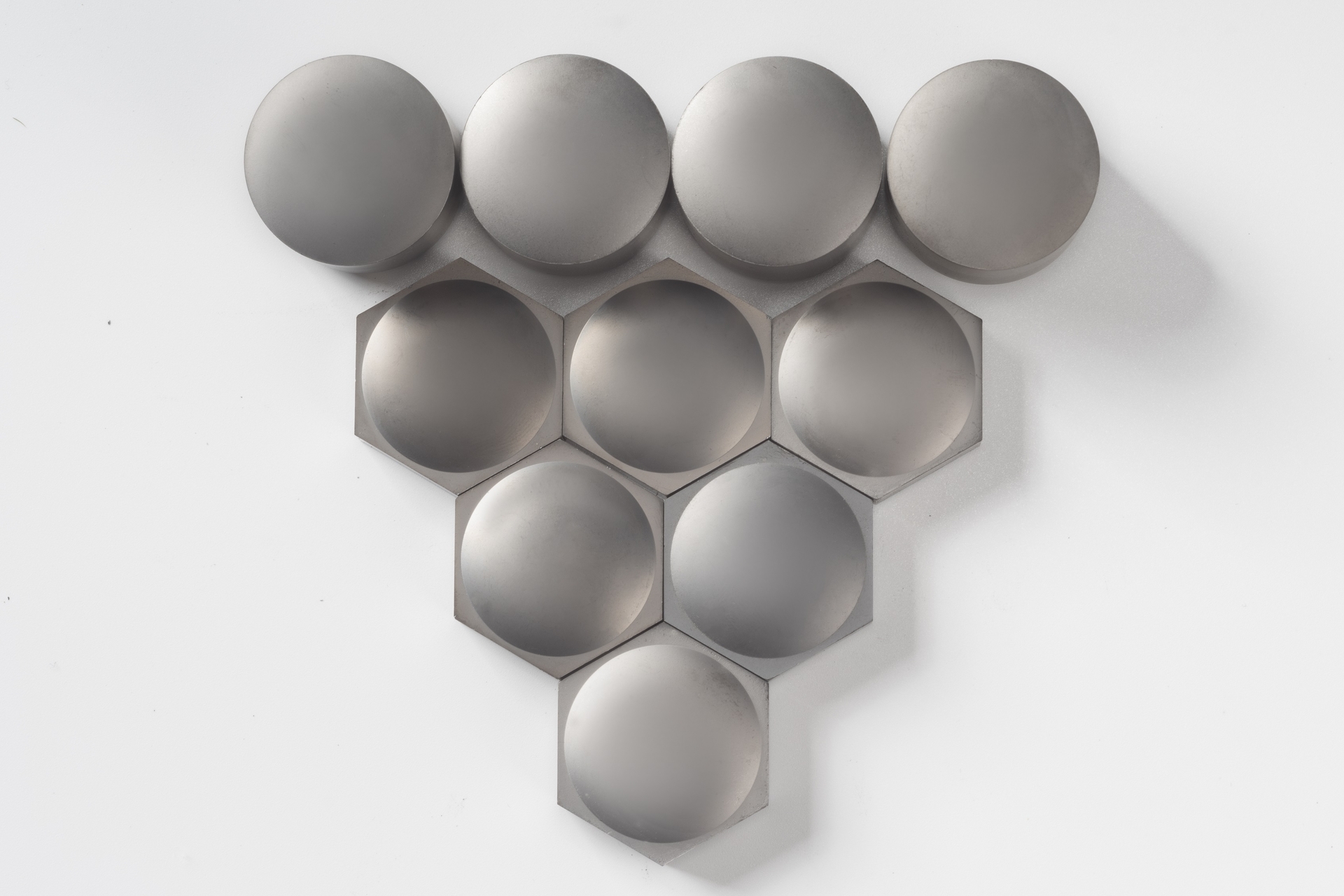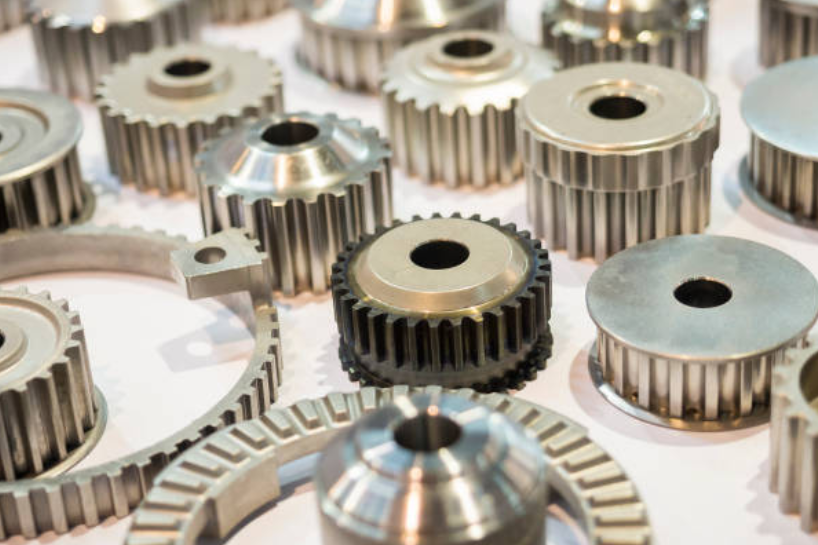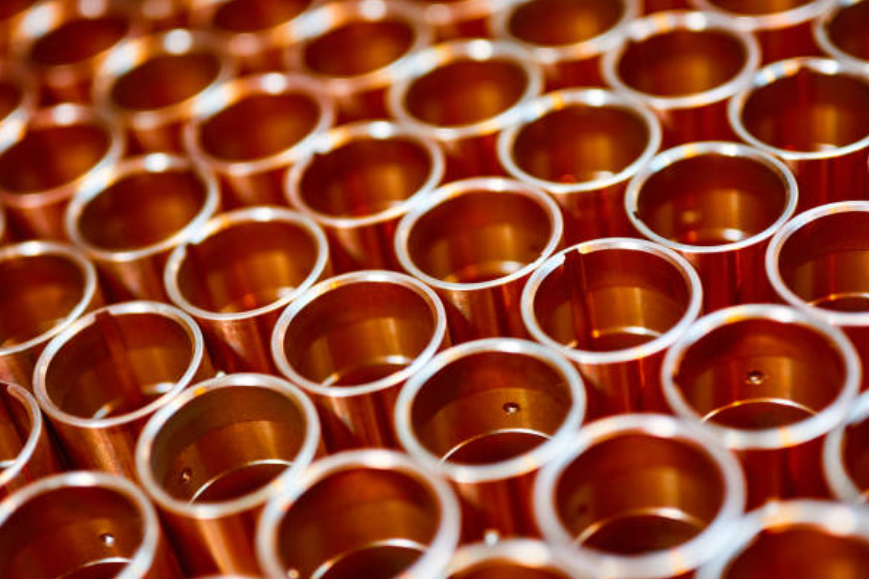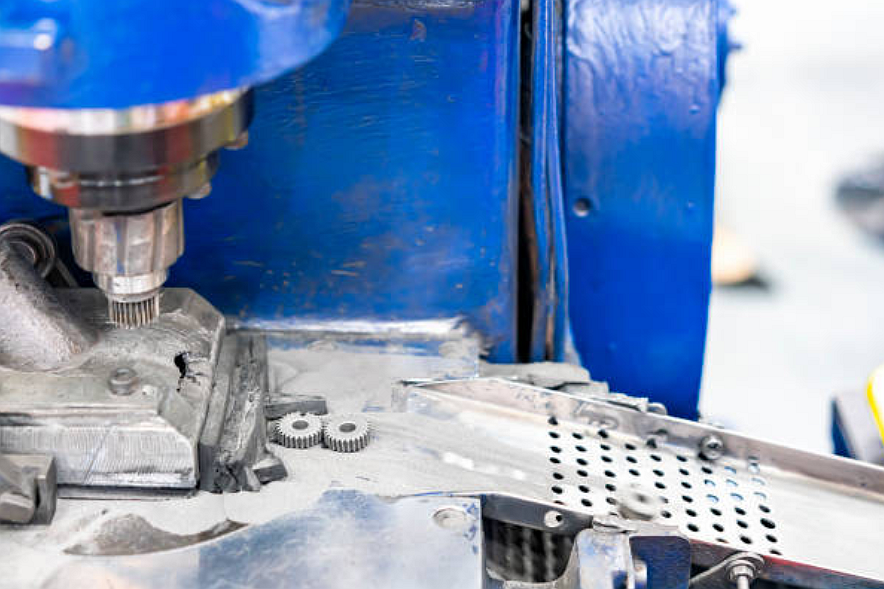Boron Carbide (B4C)
Executive summary
Boron carbide (B4C) is one of the world’s lightest and hardest engineering ceramics—second only to diamond and cubic boron nitride. It combines extreme hardness, very low density, excellent chemical stability, and strong neutron absorption, making it indispensable in ballistic armor, neutron detection and shielding, abrasive/wear components, and specialized semiconductor and energy applications.

Leveraging mature ceramic manufacturing and precision processing expertise, we mass-produce B4C thin sheets (“flakes”) with a thickness as low as 0.2 mm, while maintaining tight thickness uniformity and stable batch-to-batch quality. In parallel, we offer pressureless-sintered armor tiles for NIJ III/IV systems, precision B4C nozzles for abrasive blasting, B4C grinding balls for contamination-sensitive milling, and custom B4C parts machined to drawing.
If you’re evaluating B4C for a program in aerospace, energy, defense, telecommunication, or medical hardware, our end-to-end manufacturing depth helps you transition from prototyping to scale with confidence. Explore related industry pages for context around system-level requirements in Aerospace, Energy, and E-Mobility.
What is boron carbide?
B4C is a covalently bonded ceramic with a rhombohedral crystal structure and a very high fraction of B–C bonds. Its performance envelope is defined by:
Hardness: Mohs ~9.36; Vickers HV 2800–3200 (microhardness ~55–67 GPa)
Density: 2.46–2.62 g/cm³ (among the lowest for armor-grade ceramics)
Melting point: ~2450 °C
Elastic modulus: ≥ 400 GPa (very stiff)
Flexural strength: ≥ 450 MPa
Fracture toughness: 3.5–4.5 MPa·m½
Thermal expansion (CTE): ~4.8–5.0 × 10⁻⁶ K⁻¹ (dimensionally stable across temperature)
Thermal conductivity: 20–50 W/(m·K) (application-dependent)
Chemical stability: typically inert at room temperature; only slow corrosion in specific HF-containing acid mixtures
Neutron absorption: high intrinsic thermal-neutron capture, enabling thin, efficient absorber layers
These balanced properties explain B4C’s broad utility: ballistic armor, abrasive and erosion-resistant parts, cutting/grinding media, nuclear control and shielding, thermoelectric elements, and special coatings. For a standards-focused discussion of nuclear grades and specifications, see our guide to ASTM C751/C750 and ANSI/ANS 6.4.2 in Nuclear-Grade Boron Carbide: A Guide to ASTM C751, C750, and ANSI/ANS 6.4.2 Standards.
New: ultrathin B4C flakes to 0.2 mm
We manufacture B4C thin sheets (flakes) in large volumes, with a thickness as low as 0.2 mm. This capability opens design space in:
Lightweight armor laminates: pairing B4C with UHMWPE or aramid backers to lower areal density while preserving multi-hit performance
Neutron detection and moderation: thin, uniform absorber layers improve detector sensitivity, minimize parallax, and facilitate spectral tuning
Semiconductor & targets: thin wear- and heat-resistant shims, carriers, or target tiles where purity and stiffness matter
Extreme wear interfaces: precision shims, guides, and seals in abrasive, corrosive environments
We control microstructural uniformity and geometric precision using refined sintering cycles and diamond-based finishing. To understand when to specify pressureless sintering (PLS) versus hot-press sintering (HP) for thin and thick sections, see Hot Pressing Sintering: Process, Materials, Applications.
Formats and sizes windows
Thickness: 0.2–80 mm (ultrathin focus ≤ 1 mm; armor tiles commonly ≥ 3 mm)
Planform size: 10–500 mm; flat, single-curve, or multi-curve geometries
Shapes: hexagon, square, rectangle, trapezoid, circle, triangle, or custom per drawing
Surfaces & edges: as-sintered, ground, lapped; optional edge chamfers; holes/slots upon request
Purity: standard B4C ≥ 99.5% for flakes and many parts; specialty shapes available ≥ 98% for challenging geometries
For material availability and cross-process options, browse the B4C item in our Powder Compression Molding materials list: Boron Carbide (B4C).
Manufacturing routes: PLS vs HP (and when to use which)
Pressureless sintering (PLS)
Best for: cost/performance at scale, rigid tiling (armor), nozzles, general wear parts, standard nuclear shielding plates
Strengths: excellent throughput, stable quality, tight size deviation in small-to-medium tiles and complex small parts
Considerations: may require additional finishing for the tightest flatness/parallelism on large, ultrathin plates
Hot-press sintering (HP)
Best for: larger footprints, demanding density/porosity control, and tight microstructure—useful in semiconductor targets, nuclear core components, and specialty armor
Strengths: improved densification in thick or large parts; enhanced mechanical consistency
Considerations: smaller batch sizes; longer lead times; higher part cost vs PLS
Post-processing & finishing B4C’s superhardness makes machining non-trivial; we employ diamond grinding, ultrasonic drilling, and precise cutting strategies to achieve final tolerances and surface finishes. When post-densification is beneficial for complex assemblies, our team can integrate downstream treatments—see Hot Isostatic Pressing (HIP) Services in Manufacturing for general background.
Application playbooks
1) Ballistic armor (NIJ III/IV)
Among commonly used armor ceramics, boron carbide delivers the highest hardness at the lowest density. These two attributes translate directly to energy-efficient blunting and erosion of projectiles with less mass per unit area, enabling lighter plates and improved wearer mobility.
Architectures we support
Monolithic multi-curve plates: ideal where continuous ceramic coverage and ergonomic fit are critical
Mosaic tiling: hex, square, or triangular tiles laid over UHMWPE backers; effective for multi-hit scenarios and economical repairs
Why ultrathin flakes matter In hybrid stacks, 0.2–1.0 mm B4C layers can act as front-face strike skins or interleaved sacrificial layers that spread shock, reduce spall, and fine-tune impedance between ceramic and polymeric backers—often improving weight/performance ratios. For system-level trade studies in automotive and aerospace structures using metal castings with ceramic components, you may also find our Investment Casting and Aluminum Die Casting pages useful when armor modules integrate metallic frames or housings.
What we supply
Pressureless-sintered armor tiles for NIJ III/IV configurations, flat or curved, 10–500 mm in planform, 0.2–80 mm thickness
Ground faces and chamfers per drawing; lapping available for precision lay-ups
2) Neutron detection, control, and shielding
B4C’s high neutron absorption cross section makes it a mainstay in detectors, control rods/shutters, and shielding panels. Uniform, thin B4C flakes provide:
Efficient capture with minimized parallax and better energy resolution
Lower mass and thickness for compact instruments
Stable, high-purity surfaces compatible with detector assembly processes
For use-case detail and design cues, review:
Applications of Boron Carbide (B4C) in Nuclear Reactor Shielding and Control Systems
Nuclear-Grade Boron Carbide: ASTM C751/C750 & ANSI/ANS 6.4.2
3) Erosion and wear components (nozzles)
B4C nozzles used in abrasive blasting and powder conveyance deliver excellent wear life, corrosion resistance, and dimensional stability. Our pressureless-sintered nozzles achieve high consistency in ID/OD and straightness, with low wear rates in silica, alumina, and SiC media streams. When assemblies require metallic manifolds or brackets, our Sheet Metal Fabrication and CNC Machining Prototyping teams can support adjacent hardware.
4) Grinding media (B4C balls)
In milling hard, brittle, or high-purity materials, B4C grinding balls combine very high hardness with minimal self-wear, reducing contamination of the milled powder—a critical requirement when producing ceramic, hard-metal, or nuclear-grade blends. We utilize high-purity B4C to maintain low levels of trace contaminants; batch COAs and particle cleanliness reports are available upon request.
5) Customized special parts
We produce special shapes by combining PLS/HP forming with diamond grinding and ultrasonic drilling. Typical parts include thin spacers, target tiles, guides, and high-temperature wear inserts. If your design also includes polymer or metal elements, our Overmolding and Insert Molding resources illustrate how we routinely integrate dissimilar materials in production assemblies.
Technical specifications (typical ranges)
Composition: B4C ≥ 99.5% (standard); special shapes available at ≥ 98%
Bulk density: 2.46–2.62 g/cm³
Elastic modulus: ≥ 400 GPa
Vickers hardness: HV 2800–3200
Flexural strength: ≥ 450 MPa
Fracture toughness: 3.5–4.5 MPa·m½
Thermal expansion (CTE): ~4.8–5.0 × 10⁻⁶ K⁻¹
Thermal conductivity: 20–50 W/(m·K)
Final acceptance values are lot-specific. We provide Certificates of Analysis, dimensional/flatness reports, and optional CMM/optical data upon request. For inspection methodology background, see Dimensional Inspection for Custom Parts with CMM and 3D Scanning Measuring Instrument—Custom Parts Quality.
Design & integration guidelines
Choosing PLS vs HP
Select PLS when cost, scalability, and standard tile formats are the primary considerations.
Choose HP for larger footprints, stringent density/porosity targets, or semiconductor/target applications that benefit from highly uniform microstructures. Our overview of Hot Pressing Sintering summarizes the trade-offs.
Tile geometry for armor
Hexagons minimize gaps and deliver uniform coverage with reduced edge effects.
Squares/rectangles simplify nesting in rectangular plates and speed assembly.
Triangles provide flexibility around cut-outs and curved contours. We routinely supply flat, single-curve, and multi-curve plates—define radius, arc length, and neutral axis in your drawings.
Bonding & lay-up
For ceramic-to-polymer lay-ups (e.g., B4C to UHMWPE), surface preparation is critical: specify ground/lapped faces, roughness targets, and adhesive system. Where high-temperature modules are involved, consider mechanical retention or metalized interlayers.
Machining allowances
Because B4C is extremely hard and relatively brittle, realistic removal rates and corner integrity must be planned into the drawing. Provide finish allowances for ground faces and specify minimum edge radii or chamfers to reduce chipping risk. Our How Does Neway Provide a Qualified Size Report article explains how we confirm compliance.
Neutron applications
Collaborate with our engineers to optimize absorption versus transmission by adjusting flake thickness and purity. For reactor or beamline integrations, align your specification with the ASTM/ANSI standards summarized in our nuclear B4C standards guide.
Quality, inspection & traceability
We tightly control powder purity and particle-size distribution, forming pressure, sintering dwell/soak profiles, and cooling rates. For critical applications, we can add NDT, microstructural analysis, corrosion/erosion benchmarks, and batch-level COA with retained samples. When your program also includes metal parts, explore surface-finish options in our Knowledge Hub—e.g., Electropolishing and As-Machined Surface Finishes.
What you can order today
Ultrathin B4C flakes (0.2–1.0 mm)
For neutron detection, lightweight armor laminates, precision spacers, and shims
Typical sizes 10–500 mm, flat or curved, multiple shapes; B4C ≥ 99.5%
B4C armor tiles/plates (0.2–80 mm)
PLS tiles for NIJ III/IV systems; monolithic multi-curve or tiled mosaics
Ground/lapped surfaces; edge chamfering; hole/slot features available
B4C nozzles
Long-life, corrosion- and wear-resistant; consistent ID/OD; PLS mass-production suitable for fleet MRO
B4C grinding balls
Spherical media with very low wear and minimal contamination for purity-critical milling
Special B4C parts
Custom geometries via cutting, grinding, and drilling; ≥ 99.5% purity standard, ≥ 98% option for difficult shapes
If your assembly mixes ceramics with machined metals or molded polymers, our Prototyping group can help you select the fastest route (CNC, additive, or rapid molding) to validate fit/function before committing to production tooling.
FAQs
How thin can your B4C flakes be?
We mass-produce B4C flakes as thin as 0.2 mm, with controlled thickness uniformity across the entire platform.
Do you supply curved plates?
Yes—flat and curved formats (single or multi-curve) are available within the 10–500 mm size window.
Which process should I choose—PLS or HP?
Choose PLS for cost and scale (armor tiles, nozzles, wear parts). Choose HP for larger parts or applications that demand the highest density and uniformity (nuclear core elements, targets, select armor). See our primer on Hot Pressing Sintering.
Can you add holes/slots or complex edges?
Yes. We combine diamond grinding and ultrasonic drilling to achieve the desired features and edge integrity, specifying tolerances, minimum radii, and finish targets in the RFQ.
Do you offer documentation and inspection data?
We provide COA, dimensional/flatness reports, and optional CMM/optical data. For inspection methods, see Dimensional Inspection for Custom Parts with CMM.
Do you support adjacent metal or polymer parts in the assembly?
Absolutely. Explore CNC Machining Prototyping, Sheet Metal Fabrication, Overmolding, and Insert Molding for integrated builds.
Getting started
To accelerate quoting, include:
Drawing files (STEP/IGES + PDF) with thickness, planform, curvature (if any), hole/slot callouts, and finish specs
Target properties & purity (e.g., B4C ≥ 99.5%) and any nuclear or detector standards you’re designing to
Quantities and delivery windows (prototype and production)
Inspection requirements (flatness/parallelism, CMM/optical, special NDT)
Intended application (armor, neutron, wear, semiconductor, targets) to allow us to suggest the optimal process (PLS/HP) and finishing path
If you’re comparing ceramic and metal fabrication options for a mixed-material assembly, our Knowledge Hub and process pages—such as Investment Casting and Laser Cutting—provide useful background for system-level choices.
Request a quote for B4C flakes (0.2–1.0 mm) or armor tiles—please send your drawings and specifications.
Ask an engineer about neutron-grade and semiconductor options aligned with ASTM/ANSI standards.
Request samples of B4C nozzles or grinding balls for evaluation in your process.
With mature ceramic manufacturing and precise finishing capabilities, we deliver stable quality, tight dimensional control, and scalable capacity—from prototype lots to full production—so your team can bring lighter, tougher, and more efficient systems to market.



